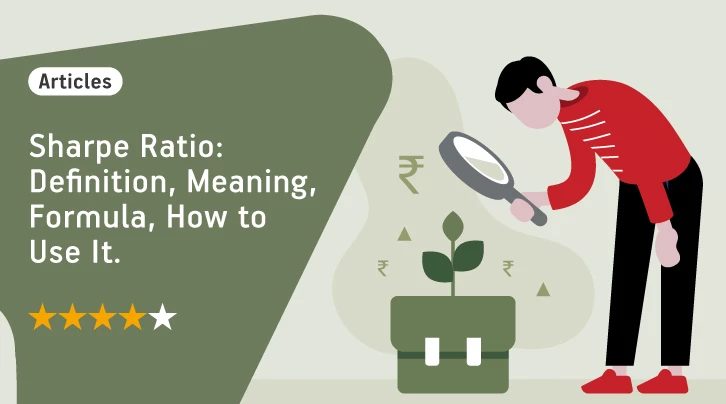Sometimes even highly risky investments can tend to provide great returns to investors. Investors, encouraged by these returns, may be influenced to keep investing in these financial instruments, which might not be the right decision in the future.
Therefore, it's vital to know the correlation between the risk taken and the return potential of a mutual fund. One tool that is commonly used for this purpose is the Sharpe ratio.
So, what is this Sharpe ratio, and how can an investor use it? Let's find out.
What Is Sharpe Ratio?
Named after Nobel Laureate William F Sharpe, the Sharpe ratio is a metric that measures the relationship between an investment's return and its risk level. It mathematically expresses that higher returns over a specified timeframe may not necessarily indicate superior investment skill. Instead, it could be a result of increased volatility and risk.
The ratio determines how much excess return investors receive for the extra volatility they are taking on compared to a risk-free asset. In India, the risk-free asset is typically represented by a 90-day Treasury bill.
In simple terms, the Sharpe Ratio tells you whether the returns on an investment are worth the risk you took to earn those returns. Generally, a high Sharpe ratio indicates that the returns were worth the risk.
Sharpe Ratio Formula
The formula for calculating the Sharpe Ratio is as follows:
Sharpe Ratio = Return of the portfolio - Risk-free return rate
Standard deviation of excess returns of the portfolio
Standard Deviation: The standard deviation represents the risk associated with an investment. It measures the degree of deviation of an investment from its average returns. The higher the standard deviation, the higher can be volatility in the investment.
Uses of Sharpe Ratio
Comparing the Performance of Different Funds
The Sharpe Ratio in mutual funds enables investors to compare the performance of different funds. Investors can use this ratio to assess the risk associated with mutual funds before investing. For instance, if a fund's Sharpe ratio is low, existing investors can consider shifting their investments to a similar fund with a higher Sharpe ratio.
Evaluating the Fund Manager’s Performance
The Sharpe ratio in a mutual fund can help determine whether a portfolio's excess returns are a result of skilful investment decisions or mere luck and risk.
Example of How to Use the Sharpe Ratio
Let's say that an investor is considering investing in two mutual funds.
Fund A has shown a return potential of 15% and a standard deviation of 10%,
Fund B shows a return potential of 17% and a standard deviation of 20%.
The risk-free rate is 5%.
So, using the Sharpe ratio formula discussed earlier, the Sharpe ratio for each fund will be as given below.
Fund A = (15 - 5) / 10= 1
Fund B = (17 - 5) / 20 = 0.6
In the above example, Fund A has a higher Sharpe Ratio than Fund B. So, the investment in Fund A can give better returns as compared to investment in Fund B.
As a result, the investor might consider investing in Fund A despite Fund B showing a better return potential.
Consider Sharpe Ratio before Investing in Mutual Funds
While investing in mutual funds can be rewarding, knowing how your fund manages risk is equally important. Sharpe ratio is one metric you can use to determine the risk factor in your chosen fund. However, Sharpe ratio shouldn't be considered in isolation. You should consider various other factors while zeroing in on the fund of your choice.
Also read : Benefits of Investing in Mutual Funds
Mutual Fund investments are subject to market risks, read all scheme related documents carefully.





 1800-270-7000
1800-270-7000




